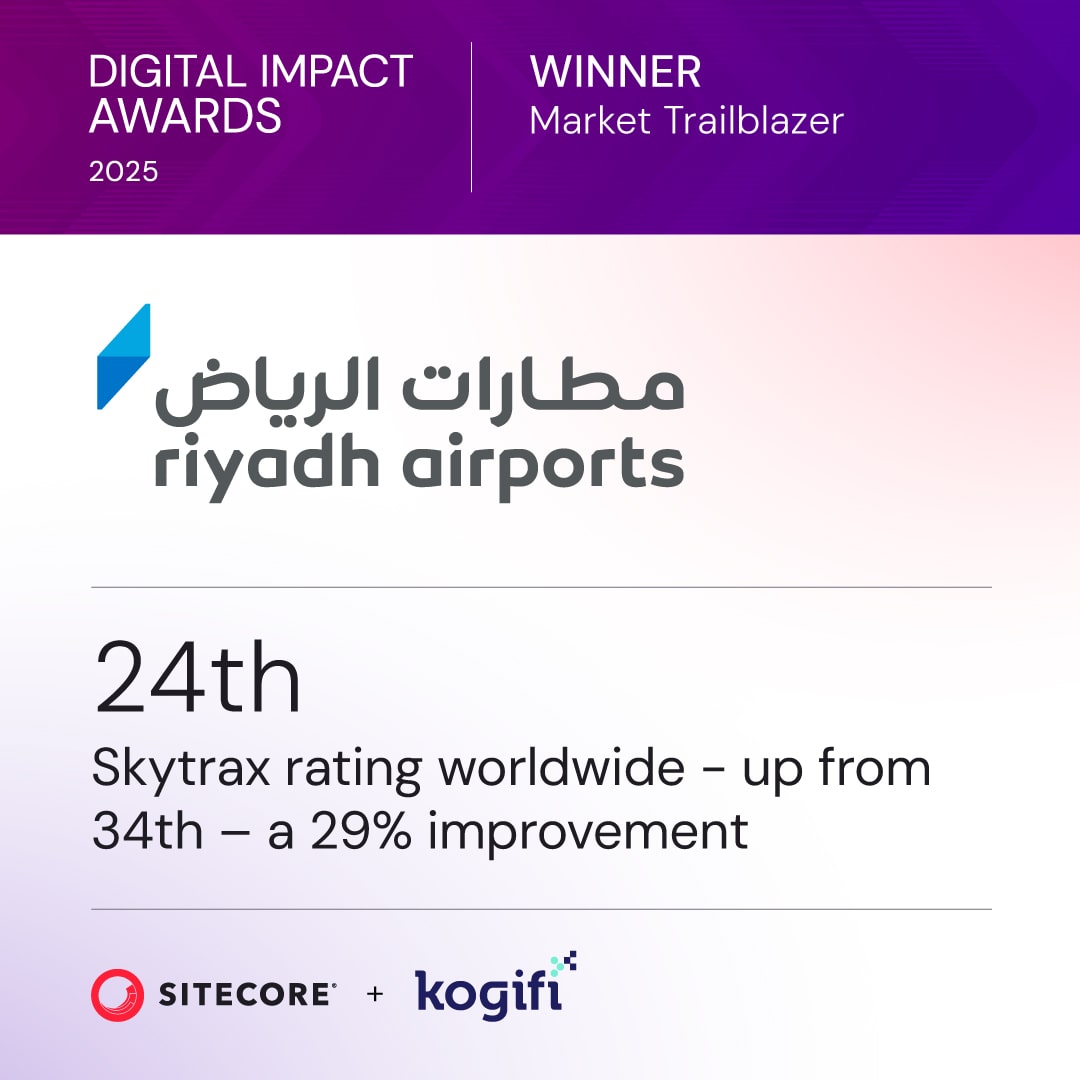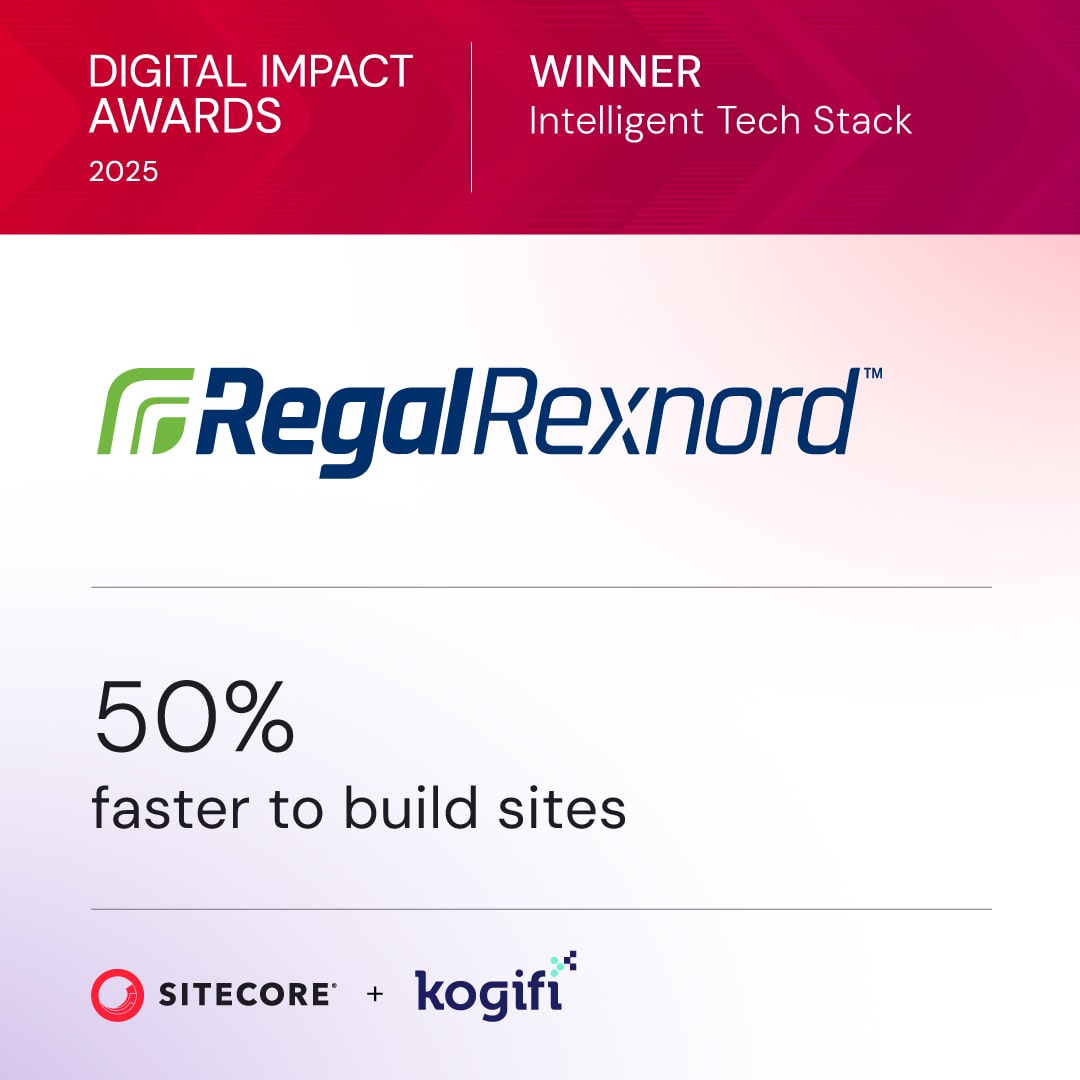Digital transformation and marketing are no longer separate initiatives; they are deeply intertwined forces driving a monumental shift toward customer-centric strategies. This is not about executing isolated campaigns. It's about architecting a unified ecosystem where data, content, and technology converge to create a seamless, personalized journey for every customer.
In today's hyper-competitive market, mastering this integration isn't just an advantage—it's the fundamental engine for sustainable growth.
Understanding The New Era of Customer-Centric Marketing
The relationship between businesses and their audiences has been fundamentally reshaped. Simply purchasing new software is not a strategy. True digital transformation in marketing requires a comprehensive overhaul of strategy, processes, and technology, placing the customer at the absolute center of every decision.
This shift elevates marketing from a message-broadcasting function to the primary architect of the end-to-end customer lifecycle. The ultimate goal is to deliver an experience that feels uniquely personal and contextually relevant at every touchpoint. Advanced platforms like the Sitecore ecosystem provide the technological nervous system to make this sophisticated, data-driven strategy a reality.
Why This Shift Is No Longer Optional
The data confirms that this is a global business imperative. Global spending on digital transformation reached a staggering $1.85 trillion in 2022, and the market is projected to grow at a compound annual rate of 23.6% through 2030. These figures underscore the serious capital being invested by companies to secure their future relevance.
This massive investment highlights a critical truth: businesses that fail to evolve their digital marketing capabilities will be outmaneuvered. A successful transformation architects change that produces measurable business outcomes. A foundational concept for this is understanding what personalization in marketing truly means.
At its core, this new era is about leveraging technology not just to sell, but to build lasting relationships. It requires a deep understanding of customer behavior, powered by data, and delivered through seamless, context-aware experiences.
The Three Pillars of Modern Marketing Transformation
To build a strategy that delivers tangible results, you must focus on three interconnected pillars. These form the bedrock of a genuine customer-first approach. For a more detailed look at structuring this change, review these customer-centric digital transformation key steps.
- Integrated Data: Consolidating customer data from all sources—CRM, ERP, web analytics, social—into a single, unified customer profile. This is the foundation for actionable, 1:1 personalization.
- Intelligent Content: Architecting a content supply chain that creates, manages, and delivers personalized, contextually relevant content at every stage of the customer journey, at scale.
- Seamless Commerce: Designing and delivering frictionless, integrated purchasing experiences that are embedded directly into the customer's journey, catering to both B2B and B2C models.
Driving Transformation With The Sitecore Ecosystem
To achieve true digital marketing transformation, a disconnected suite of marketing tools is insufficient. You require a central, technologically advanced hub that orchestrates every customer interaction. This is precisely the role the Sitecore ecosystem fulfills, serving as the engine for a modern, composable Digital Experience Platform (DXP).
A composable DXP is not a monolithic, one-size-fits-all product. Instead, it is an assembly of best-in-class, API-first components that can be configured to meet specific business needs. This architecture empowers marketing and IT teams with the flexibility to build a technology stack that is perfectly aligned with organizational goals, allowing capabilities to be added or replaced without disrupting the entire system.
This agile approach is critical. As markets evolve and customer expectations shift, a composable architecture allows you to adapt swiftly, free from the constraints of a single vendor's rigid roadmap. It’s about selecting the premier tools for each job and ensuring seamless data flow between them.
The Core Components of Sitecore's Composable DXP
The power of Sitecore lies in the synergistic integration of its specialized products, creating a unified view of the customer and their journey. Each component addresses a critical aspect of the digital experience, from content strategy to complex commerce. This integration enables marketers to transition from fragmented campaigns to cohesive, deeply personalized customer experiences.
Three foundational pillars of the Sitecore Experience Cloud are particularly crucial for driving marketing transformation:
- Sitecore Experience Platform (XP): This is the core engine for personalization, marketing automation, and analytics. It aggregates data from every touchpoint to build rich, dynamic customer profiles, enabling the delivery of highly relevant content and experiences in real-time.
- Sitecore Content Hub: More than a CMS, this is a comprehensive solution for the entire content lifecycle. It unifies content strategy, planning, creation, and distribution, ensuring every marketing asset is on-brand and optimized for performance across all channels.
- Sitecore OrderCloud: A powerful, API-first, headless commerce engine designed for complex scenarios. It supports sophisticated B2B, B2C, and B2X business models, allowing the creation of customized purchasing experiences that transcend the standard shopping cart.
When these components are integrated, they create a powerful flywheel: data informs content, content drives commerce, and every interaction enriches the customer profile. Explore our expert Sitecore platform services to understand these capabilities in greater depth.
The ultimate goal of a composable DXP like Sitecore is to break down the silos between marketing, sales, and service. When data, content, and commerce are seamlessly integrated, the result is an organization that can respond to customer needs with unprecedented speed and relevance.
This hierarchy diagram shows you the core pillars of a modern digital marketing strategy. It puts the customer right at the top, supported by integrated data, content, and commerce capabilities.
This visual really drives home the point: a successful transformation starts with the customer and demands a strong technological foundation to support every interaction that follows.
Weaving in SharePoint for Operational Excellence
While Sitecore orchestrates the external customer experience, a true digital transformation demands internal operational excellence. This is where SharePoint becomes a critical, and often underestimated, asset in your marketing technology stack. An exceptional customer experience cannot be consistently delivered by a disorganized, siloed internal team.
SharePoint provides the collaborative foundation for your marketing organization. It acts as a single source of truth, dismantling the information barriers that impede campaign velocity and stifle creativity.
Consider a campaign workflow: a new brief is collaboratively authored and refined on a SharePoint site. All stakeholders—from copywriters to designers—have immediate access to the latest version, brand assets, and market research. Upon finalization, this content can be seamlessly integrated with Sitecore for publication across all channels.
This synergy unlocks several key benefits:
- Brand Consistency: Everyone works from the same approved assets and brand guidelines, eliminating rogue logos and outdated messaging.
- Improved Efficiency: Teams reduce time spent searching for information and dedicate more resources to high-impact creative work.
- Faster Time-to-Market: The content lifecycle, from ideation in SharePoint to delivery via Sitecore, is significantly accelerated.
- Enhanced Governance: With structured workflows and approval processes in SharePoint, you ensure quality and compliance before content reaches the customer.
By pairing the external-facing power of Sitecore with the internal collaborative strength of SharePoint, you create a holistic system that addresses both sides of the digital transformation and marketing equation. This dual-platform strategy ensures your marketing team is not only equipped to deliver world-class customer experiences but is also empowered by efficient, scalable internal processes.
Powering Marketing With SharePoint Solutions

An exceptional customer experience is not created at the final touchpoint. It is built upon a foundation of seamless, efficient internal operations. While Sitecore excels at managing the external digital journey, SharePoint serves as the indispensable hero of your internal marketing strategy, providing the collaborative backbone that high-performance marketing requires.
Perceiving SharePoint as a mere intranet is a significant missed opportunity. In the context of digital transformation and marketing, a modern SharePoint environment functions as the central nervous system for your team, designed to eliminate the information silos that hinder creativity, consistency, and speed.
Creating A Single Source of Truth
The most significant advantage SharePoint brings to marketing is its ability to establish a single source of truth. When brand assets, campaign briefs, market research, and content calendars reside in one centrally governed, accessible location, your team operates with greater speed and intelligence.
This eliminates version control issues and the time wasted searching for the latest approved brand assets or messaging guidelines.
This central hub is more than a digital repository; it is a dynamic workspace. By building marketing operations within SharePoint, you can implement structured workflows and transparent approval processes. A new piece of content can be drafted, routed for legal review, approved by leadership, and queued for publication—all within a single, auditable environment.
SharePoint transforms internal processes from a chaotic mess of emails and shared drives into a structured, transparent, and efficient content supply chain. This internal alignment is the bedrock upon which consistent, high-quality customer experiences are built.
This operational backbone is non-negotiable for any organization aiming to scale its marketing efforts. You can learn more about architecting this powerful environment by exploring modern SharePoint solutions and their capabilities.
The Synergy Between SharePoint and Sitecore
The true potential is unlocked when you integrate your internal and external platforms. The synergy between SharePoint and Sitecore exemplifies how content can be created, refined, and published with maximum efficiency and governance.
Imagine your team planning a major product launch within a dedicated SharePoint site. The workflow might look like this:
- Initial Planning: Campaign briefs, target audience personas, and key messaging pillars are developed and stored in a SharePoint document library.
- Asset Creation: Designers upload approved brand assets. Copywriters draft web pages, emails, and social media posts directly within SharePoint, utilizing version history and co-authoring features.
- Collaborative Review: Stakeholders from product, sales, and legal provide feedback and formal approval directly within the platform, creating a clear audit trail.
This structured process ensures that by the time content is ready for the customer, it has been thoroughly vetted and is perfectly aligned with strategic goals.
From Internal Refinement To External Publication
Once content is finalized and approved in SharePoint, integration with Sitecore becomes critical. Instead of a manual, error-prone process of copying and pasting, custom connectors can push content directly from SharePoint into the Sitecore Experience Platform.
This seamless handoff is a game-changer. It drastically reduces the risk of human error, ensuring the approved version is the only version that goes live. It also significantly accelerates the publishing timeline, enabling marketing teams to be more agile and responsive to market dynamics.
This integrated approach delivers tangible benefits that enhance marketing outcomes:
- Guaranteed Brand Consistency: Only approved assets and content from the SharePoint "source of truth" are published to customer-facing channels managed by Sitecore.
- Accelerated Time-to-Market: The content lifecycle—from concept to launch—is significantly shortened, providing a competitive advantage.
- Enhanced Governance and Compliance: With clear approval workflows in SharePoint, you maintain strict control over published content, mitigating legal and brand risk.
Ultimately, by pairing Sitecore’s customer experience prowess with SharePoint’s collaborative strength, you create a robust, end-to-end system. This dual-platform strategy addresses the complete picture of digital transformation and marketing, ensuring your internal operational excellence translates directly into a superior customer experience.
Delivering Personalization and Automation at Scale

Possessing the right technology stack is merely the first step. The true challenge—and the source of competitive advantage—is translating that technological power into measurable business results. This is where digital transformation evolves from a concept into a fundamental change in how you engage with customers, shifting from generic broadcasting to a series of meaningful, one-to-one conversations.
The ultimate objective is to deliver personalization and automation at a scale previously unimaginable. This extends far beyond inserting a first name into an email; it involves creating dynamic experiences that adapt in real-time to a user's behavior, history, and predicted intent.
Mapping Intricate Customer Journeys in Sitecore
Effective automation begins with a meticulously mapped customer journey. Within the Sitecore Experience Platform (XP), this is not a static diagram but a dynamic, actionable model that can be built, tested, and optimized. The platform's Marketing Automation tools allow you to visually design these journeys with specific triggers, rules, and actions.
Consider this scenario: a visitor downloads a whitepaper. This single action can initiate a sophisticated, automated sequence:
- Instant Enrollment: The user is immediately enrolled in an engagement plan tailored to their demonstrated interest.
- Automated Follow-up: A few days later, an automated email delivers relevant case studies or a webinar invitation.
- Profile Scoring: Their engagement score is adjusted, signaling their progression from awareness to consideration.
- Sales Enablement: Once the engagement score crosses a predefined threshold, an alert is automatically sent to the sales team via CRM integration.
This level of orchestration ensures no lead is lost and that every interaction contributes to a more complete understanding of the customer's needs.
Harnessing AI and Rules-Based Personalization
Sitecore provides a powerful dual approach to personalization. You can begin with rules-based personalization for immediate impact. For example, a rule could be set: "If a visitor has viewed 'Enterprise Solutions' pages more than twice, display a banner for our upcoming enterprise webinar."
As you accumulate more behavioral data, you can leverage Sitecore’s AI capabilities. Its machine learning algorithms analyze user behavior at scale, identifying patterns to predict which content or offers an individual will find most engaging, and automatically delivering it.
This predictive personalization is about anticipating customer needs before they are explicitly stated. The system learns what resonates and autonomously optimizes the experience to increase conversions, moving beyond marketer-defined rules to true, data-driven engagement.
The worldwide shift to digital is undeniable. Digital ad channels are expected to grab 72.7% of all ad spending in 2024, a huge jump from just under 50% in 2018. This massive investment shows just how critical it is to have platforms that can make every dollar count through laser-focused targeting.
The SharePoint Connection to Content Velocity
While Sitecore is the engine driving the customer-facing experience, the content that fuels it often originates in SharePoint. A well-structured SharePoint repository is crucial for content velocity and readiness for automation. By tagging assets in SharePoint with metadata—such as audience, topic, and journey stage—that content can be seamlessly ingested and utilized by Sitecore’s personalization engine.
This integration ensures the right asset is available for the right moment in the customer journey. Your marketing team can focus on creating high-quality content within their collaborative SharePoint environment, confident that Sitecore's automation and AI will deliver it to the right person at the optimal time. For a deeper dive, explore our guide to automated content marketing.
This is the manifestation of successful digital transformation in marketing: your technology stack becomes a powerful engine for building loyalty and driving sustainable growth.
Your Strategic Framework For Implementation
Embarking on a full-scale digital marketing transformation can seem daunting. The key to success is not a single, high-risk launch but a phased, strategic rollout that demonstrates value at each stage. A robust roadmap transforms an overwhelming vision into a series of manageable, value-driven achievements.
This framework guides you through the process, ensuring your investments in platforms like Sitecore and SharePoint are directly tied to business objectives. It is designed to build momentum, mitigate risk, and secure early wins to maintain project velocity.
Phase 1: Strategy And Discovery
Before any technology is considered, a clear and unified vision is paramount. This initial phase is dedicated to defining what "success" means for your organization. It requires close collaboration between marketing, IT, and executive leadership to align on specific business outcomes.
Move beyond ambiguous goals like "improving the customer experience." Instead, define specific, measurable Key Performance Indicators (KPIs). For example, a goal might be to increase customer lifetime value by 15% or reduce shopping cart abandonment by 20% within 18 months.
This discovery phase serves as the North Star for the entire initiative. Every subsequent decision—from technology selection to feature prioritization—must be validated against the goals established here. Without this clarity, projects risk scope creep and fail to deliver tangible business value.
Phase 2: Technology Architecture
With a clear strategy in place, the next step is to design the technology architecture that will bring it to life. This requires deep expertise in the Sitecore product portfolio and SharePoint's capabilities. Your architecture must be a direct response to your strategic goals.
For instance, if hyper-personalization is the primary objective, the Sitecore Experience Platform (XP) will be the core of your solution. If the goal is to streamline a global content supply chain, Sitecore Content Hub will be the centerpiece.
This phase also involves mapping data flows and integrations. The interplay between SharePoint for internal collaboration and Sitecore for customer-facing delivery is a critical component.
- SharePoint Foundation: Architect modern SharePoint sites to serve as the single source of truth for campaign briefs, brand assets, and content drafts, ensuring internal alignment and governance.
- Sitecore Integration: Design seamless connectors to push approved content directly from SharePoint into Sitecore, dramatically reducing time-to-market and ensuring brand consistency.
- Composable DXP Vision: Select other best-of-breed tools for your composable DXP, ensuring they integrate cleanly with your Sitecore and SharePoint foundation via a robust API strategy.
Phase 3: Phased Implementation
Avoid a "big bang" implementation at all costs. A phased approach is essential for managing risk, demonstrating value early, and maintaining stakeholder buy-in. Deconstruct your grand vision into smaller, value-driven releases.
Your initial release might focus on a high-impact, foundational element, such as launching a new corporate website on Sitecore with basic personalization rules. This delivers a quick win and familiarizes your team with the new platform. Subsequent phases can then build upon this foundation, introducing more advanced capabilities iteratively.
For example, a second phase might integrate SharePoint workflows for content approval, while a third could introduce Sitecore's marketing automation tools. This iterative cycle allows for learning and adaptation based on real-world data and user feedback.
Phase 4: Continuous Optimization
Digital transformation is not a project with a defined endpoint; it is a continuous cycle of improvement. This final phase is an ongoing loop of measuring, learning, and optimizing. Sitecore's built-in analytics are indispensable here, providing the quantitative data needed to evaluate what is working and what is not.
Utilize A/B testing to refine headlines and calls-to-action. Analyze user journey data to identify friction points and opportunities for a smoother experience. The insights gathered should directly inform the priorities for your next implementation cycle.
This data-driven mindset ensures that your digital transformation and marketing efforts evolve in tandem with your customers' needs, maximizing ROI over the long term. It transforms your digital platform from a static asset into a dynamic engine for business growth.
Here's a look at how these phases typically break down in a real-world project.
Digital Transformation Implementation Phases
By following this phased structure, you create a sustainable and adaptable path to transformation, ensuring each step builds logically on the last.
Measuring Success And Proving ROI
A digital transformation initiative without clear metrics is merely an expensive experiment. To justify significant investments in platforms like Sitecore, you must move beyond vanity metrics such as clicks and impressions. Success is measured by tracking KPIs that demonstrate a tangible impact on the business and prove a strong return on investment.
Ultimately, any effective strategy must include a robust plan for measuring the ROI of your digital marketing efforts. This is where an integrated platform like Sitecore demonstrates its true value.
Tracking What Matters in Sitecore
The Sitecore Experience Platform (XP) is engineered not just for content management, but for deep, actionable user insight. Instead of simply tracking page views, you can measure how specific digital interactions contribute to overarching business goals. This is how you build a compelling business case for your digital transformation and marketing strategy.
Within Sitecore, focus on these key metrics:
- Customer Lifetime Value (CLV): Track precisely how personalized experiences are increasing the long-term value of your customers. By connecting touchpoints over time, Sitecore provides a clear view of CLV growth.
- Engagement Value Score (EVS): Assign point values to specific user actions—such as downloading a whitepaper or watching a product demo. This allows you to measure the quality of engagement, not just the quantity.
- Goal Conversion Rates: Define and track both macro-conversions (e.g., a purchase) and micro-conversions (e.g., newsletter signup). Analyze which campaigns, content, and personalization rules are most effective at driving desired actions.
The objective is to connect every digital interaction to a business outcome. When you can demonstrate to stakeholders that a specific personalized component increased conversion rates by 15%, the conversation shifts from cost to proven value.
This data-driven optimization is a continuous cycle of measuring, learning, and refining your strategy to ensure your transformation consistently delivers results and adapts to evolving customer expectations.
Got Questions? We’ve Got Answers.
Embarking on a digital transformation journey can raise many questions. We have compiled some of the most common inquiries we receive to provide clarity as you map out your strategy.
Our goal is to equip you with the insights needed to move forward with confidence.
How Is Sitecore's Composable DXP Different From a Traditional All-in-One Suite?
A traditional, all-in-one DXP is like a pre-built home. While convenient, it comes from a single provider with limited customization options. Modifying a core component can be complex and restrictive.
In contrast, Sitecore's composable DXP is like building with high-end, interchangeable components. You select best-in-class solutions—like Sitecore's own Content Hub or OrderCloud—and connect them via APIs to construct a platform that perfectly matches your business requirements.
This composable approach delivers superior flexibility and agility. When you need to add or replace a tool, you can do so without disrupting the entire ecosystem. This means your technology stack can evolve with your business, rather than constraining it.
What Is The Very First Step My Business Should Take?
The most critical first step, preceding any technology discussion, is strategy and discovery. You must define what success looks like for your business. This involves aligning key stakeholders on clear, measurable goals and KPIs.
Avoid vague objectives. Set specific targets, such as, "increase marketing-qualified lead quality by 20% through personalization" or "reduce content creation time by 30% with a centralized asset repository." This initial strategic alignment, as detailed in our implementation framework, becomes the guiding principle for every subsequent decision.
A successful digital transformation isn't built on technology; it's built on a clear vision for what that technology needs to achieve for the business. Everything else flows from there.
Can SharePoint Really Affect Our External Marketing Results?
Absolutely. While it is an internal collaboration platform, SharePoint's impact on external marketing is profound. It serves as the foundation of your content supply chain.
By using SharePoint as the single source of truth for brand assets, campaign briefs, and content drafts, you enforce consistency and quality control before anything reaches the customer.
This internal operational excellence translates directly into improved external results. Content is developed collaboratively and pushed seamlessly to a platform like Sitecore. Your time-to-market is accelerated, brand consistency is maintained, and your marketing team can operate with greater efficiency and impact.
Ready to build a digital transformation that drives real business results? At Kogifi, we specialize in implementing powerful Sitecore and SharePoint solutions that form the backbone of modern marketing. Let's build your future digital experience together.








































